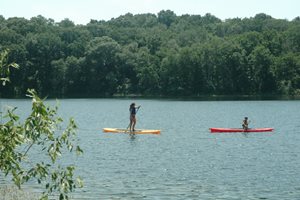The Regional Parks System primarily consists of lands located in high-quality natural resource settings that are contiguous to lakes, rivers, or other water bodies. Natural resource restoration and protection is a key objective. The Regional Parks System contains large areas of land that often extend into multiple communities. Federal and state recreation and open space lands generally serve similar recreational needs as the Regional Parks System. Your comprehensive plan should identify, map, and plan for all of the Regional Parks System components as well as federal and state recreation and open space lands that are located within your community.
 Minimum Requirements:
Minimum Requirements:

Describe, map, and label the Regional Parks System facilities that are located in your community.
-
If no portion of the Regional Parks System falls within your community, state that fact in your comprehensive plan.
-
Describe, map, and label the federal and state recreational lands within your community, as shown on your System Statement.
-
Depict existing regional parkland with a land use of “Park” (or your community’s equivalent) on your Existing Land Use map.
-
Acknowledge the Council-approved master plan boundaries of regional parks, park reserves, and special recreation features by guiding the properties with a land use of “Park” (or your community’s equivalent) on your Future Land Use map.
 Get More Out of Your Plan:
Get More Out of Your Plan:

We Can Help!